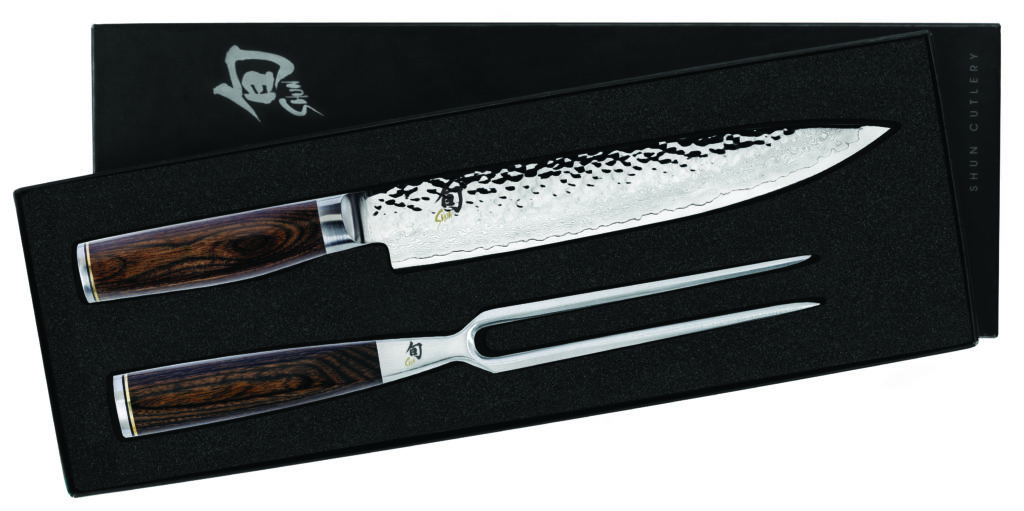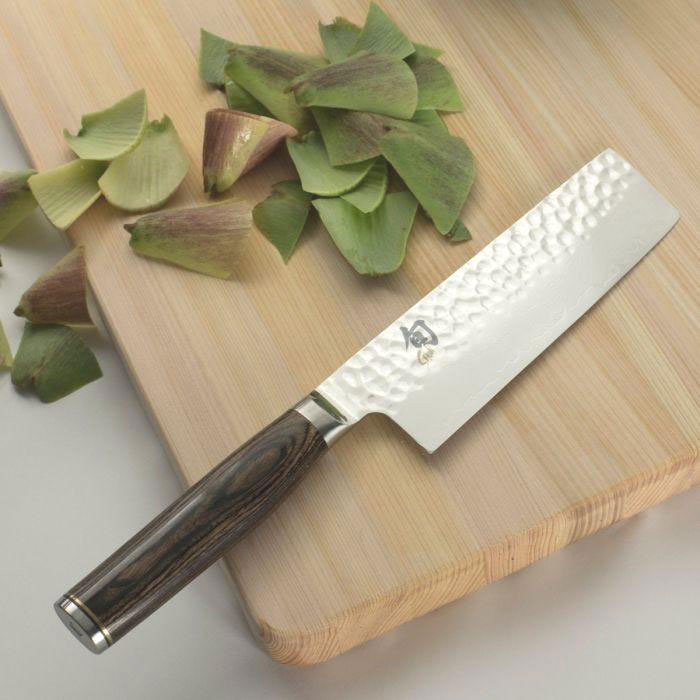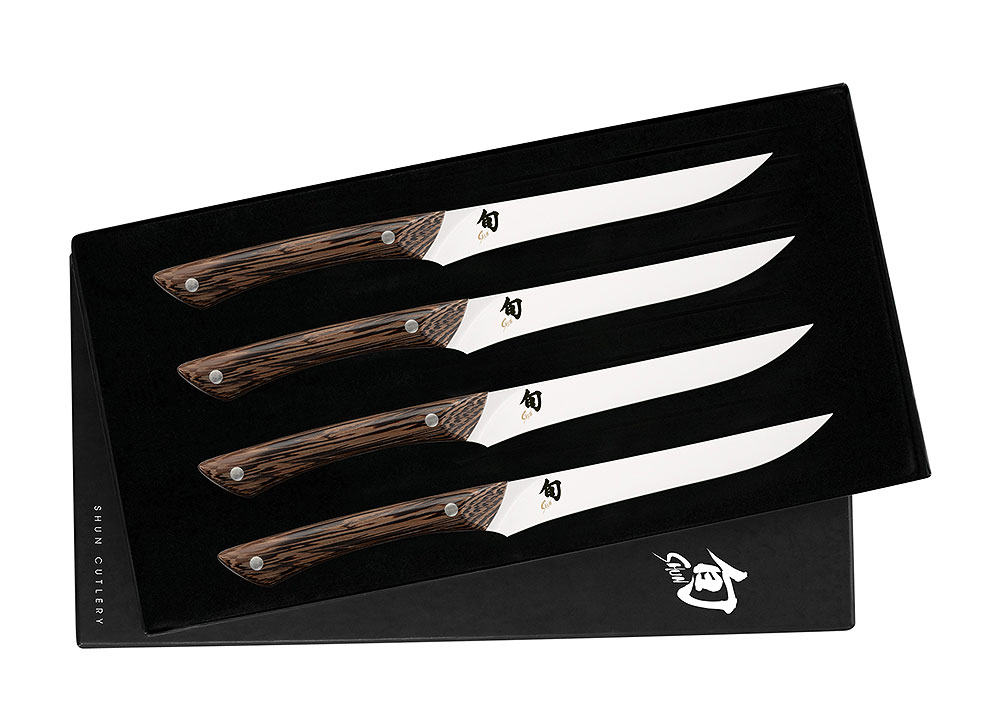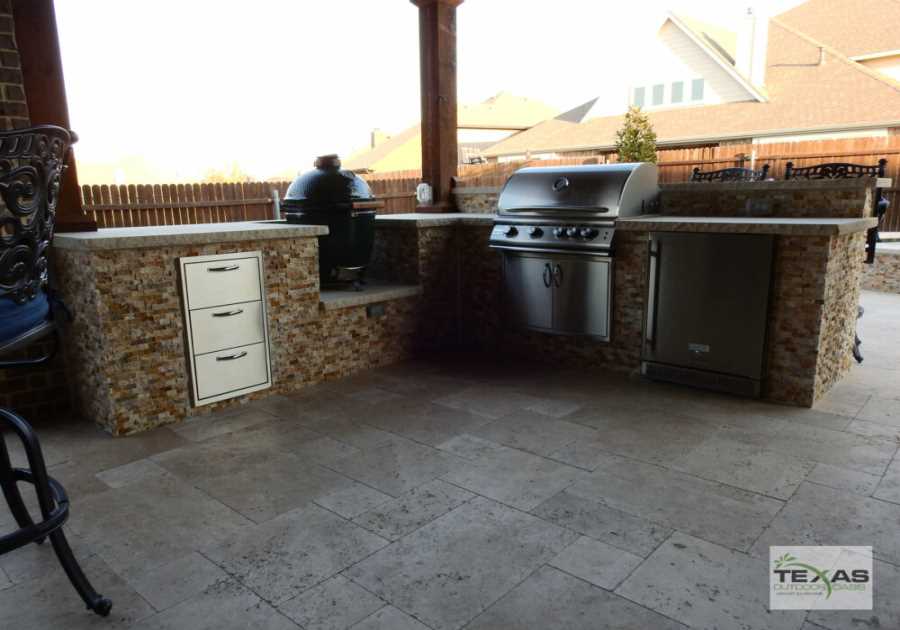Good knives are one of the best investments to make when you’re outfitting—or upgrading—your kitchen. And you might be surprised to that instead of a full wooden block of blades, you really only need three knives: a chef’s knife; a bread knife with a serrated blade; and a paring knife for peeling or carving vegetables and boning meats.
As a newlywed, my first set of knives was very modest. I soon learned, however, that they couldn’t hold an edge. I was forever running the blades against the steel they came with under the mistaken belief that I was sharpening the knives. A steel simply “trues” the blade, straightening the small dings that occur with normal use.
I upgraded my knife set when I went to culinary school. But I still wasn’t satisfied, especially since good knife skills were a requirement of my studies. However, I soldiered on with what I had. Years later, I discovered the knives of my dreams on the set of Steven’s show, Project Fire (airing now on American Public Television). They are made by Shun, a Japanese company established over 100 years ago by craftsman Saijiro Endo. Steven was so impressed with the knives that he now uses them in his own kitchen.
They are a joy to use—terrifyingly sharp, devastatingly beautiful, and among the most functional knives you will ever encounter.

Here are Steven’s recommendations if you’re in the market for a new knife (or a set of knives).
*Make sure the knife feels comfortable in your hand.
*Buy a knife for its functionality, not just beauty.
Again, nearly 90 percent of your cutting tasks can be accomplished with one or two knives. Here are a few of our favorites.
A chef’s knife: This is what most people mean when they mention a kitchen knife; a wide, stiff-bladed knife primarily used for chopping. Chef’s knives, which range in length from 6 inches to 12 inches, are thicker and heavier than most knives. Their heft helps them push though the ingredients you’re chopping. (Shun’s chef’s knives are relatively lightweight, helping reduce fatigue in your wrists and fingers.)
A paring knife: A stiff-bladed knife with a short (3- to 4-inch) blade used for peeling or carving vegetables or fruits and trimming and boning meats. Depending on what you’re cutting, you use the front portion of the blade for slicing and the back half for paring (trimming).
A bread knife or serrated knife: This knife has a long, slender, non-tapered blade with deeply scalloped serrations that cut cleanly through crusts, bread, roasted meats, and ripe tomatoes without tearing them.
A santoku knife: If you can buy only one knife, Steven recommends this one, a kind of a hybrid between a chef’s knife and a paring knife. It resembles a slender cleaver, and is long enough for chopping, agile enough for trimming, and has a wide blade that’s useful for crushing garlic and transferring chopped onions, shallots, or other ingredients from the cutting board to a bowl or a pan.
A Nakiri knife: This specialized vegetable knife is straight-bladed to make full contact with the cutting board. You’ve like seen Steven use his on the set of Project Fire.

How to Test-Drive a Knife
- Hold the knife in your hand: Does it feel solid and well-balanced? (Shun knives go through 100+ individual processes to ensure their quality and functionality.) Rock the blade on a cutting board, moving the handle up and down, as you would when chopping.
- Test the knife. Some kitchenware shops keep fresh produce on hand for just that purpose. So, if possible, use the knife to slice a tomato. A sharp well-proportioned blade will glide through the skin. A poorly designed or crafted knife will slide off to one side or simply crease the skin. Next, try slicing an onion or a carrot. A good knife will produce thin, even slices
- Finally, check out the craftsmanship: Does the knife look well made?

Some final knife wisdom
-Chefs say that you’re more likely to cut yourself with a dull knife than a sharp one. The reason? You need to exert more pressure to cut with a dull knife. Always be conscious of your hand in relation to the knifes blade. Shun knives have substantial bolsters to help protect your fingers.
-For ease in slicing, pull the blade toward you in one continuous stroke as you cut. No sawing should be necessary.
-When chopping round vegetables, like potatoes or carrots, cut a thin slice off the bottom side before you start. This steadies the vegetable on the cutting board.
-Use the right knife for the job.
-Never put knives in the sink, especially in a sink full of suds. It’s a trip to ER waiting to happen.
-Never put knives—especially premium knives like Shun—in a dishwasher. Flying debris can dull blades, invade the seams, and degrade the handles.
-Wash and dry knives promptly.
-Have the knives professionally sharpened unless you’ve been trained in how to do it properly.
What is your favorite knife? Let us know on Facebook, Twitter, Reddit, or Instagram!
The post Sharp Knives and How They’re Used are Essential for Successful Grilling appeared first on Barbecuebible.com.
------------------------------------------------
By: Daniel Hale
Title: Sharp Knives and How They’re Used are Essential for Successful Grilling
Sourced From: barbecuebible.com/2022/06/14/a-guide-to-using-knives/
Published Date: Tue, 14 Jun 2022 17:46:42 +0000
Did you miss our previous article...
https://smokergrillreviews.com/grilling-favorites/grilled-garlic-butter-picanha






